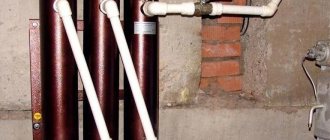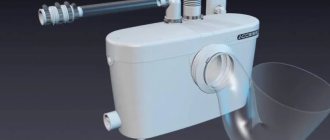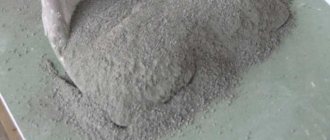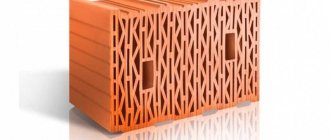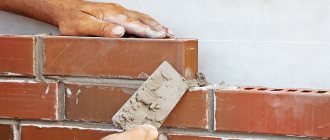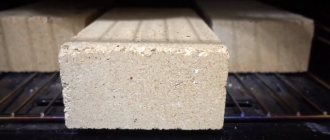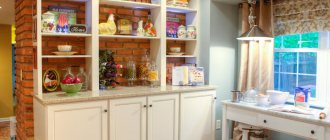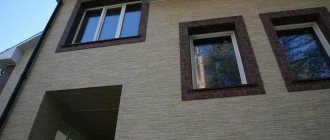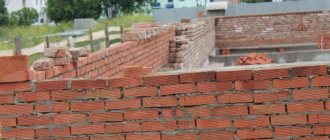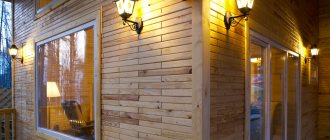What is a furnace lining and why is it needed?
The walls of the combustion chamber in brick kilns are constantly exposed to high temperatures, so only fire-resistant materials are used for its construction.
But they are not able to withstand the flow of thermal energy released during fuel combustion. Ordinary stove brick dries out over time and can crack, which will lead to the slow destruction of the structure. Therefore, for additional protection from the effects of open fire, the furnace walls are lined.
Why does a stove without refractory crack in the firebox?
The owner of this stove writes about the previous stove:
it didn’t smoke, the brick didn’t crumble even after 50-100 years, that’s how they used to do it!
Only it was not the ovens that made it so well before, but the brick was different.
You can argue for a long time whether the brick was better or worse, and there will still be no clear answer.
Indeed, old ceramic bricks held fire better.
But even with this condition, special, refractory bricks were used for the fireboxes.
All this brick was strong, but crooked to the point of disgrace.
It was, if not impossible, then terribly difficult to make an even stove out of it.
I personally built a stove from such an old brick and after this experience I decided never to agree to this again.
Nowadays, no one needs creaks; they require from the stove maker not only heat, but also a good appearance of the stove.
Here you can object by mentioning the stoves in the boyars' houses. But guys, do you understand the price of tiled stoves?
Russian stove in a peasant house and a tiled stove in Menshchikov's palace.
Alternative to fire bricks
However, it may happen that fireclay is not available in stock, or the budget does not allow you to buy such an expensive material. After all, if you compare the cost of fireclay with simple ceramic ordinary bricks, the difference will be significant - 2-2.5 times.
The question is, why do you need fireproof material? If for the construction of an industrial thermal unit with an operating temperature of 1500 degrees, then nothing can replace fireclay. Unless there is a different type of refractory brick - silica, basic or carbon.
But if you are building a regular garden stove or fireplace for your home, you can find a good alternative to fireclay bricks. At the same time, you will also save money. In private heating units such as fireplaces, stoves or barbecues, the operating temperature rarely exceeds 1000 degrees. Therefore, materials with a fire resistance of 1200-1500 degrees will suit you, and you don’t have to spend money on expensive fireclay with a maximum fire resistance of 1730 degrees.
A good way to lay fireclay on solutions of different recipes
Fireclay brick cannot be confused with any other block, even with other refractories.
Mostly yellow or even light yellow in color, with a whitish tint. The main difference between fireclay bricks is the high content of aluminum oxide in various chemical forms and modifications. In comparison with ceramic bricks, with a high content of iron oxide and silicon oxide, fireclay bricks have their own characteristics that affect their durability:
- The surface of the block is highly porous, but these pores are very small; the solution penetrates poorly into them, but moisture and air penetrate well;
- The coefficient of thermal expansion of each brick is strictly individual, which will require difficult and painstaking selection of the composition of the mortar for masonry;
- The refractoriness and ductility of fireclay bricks largely depends on the operating mode of the furnace, and not on the composition of the mortar or the method of laying.
Advice! For the lining of one furnace, you cannot use fireclay from different batches or a set of randomly selected bricks; in extreme cases, different types can be converted into broken or fireclay powder
The method is not very popular among professional stove makers; many criticize it for being excessive, unnecessary complexity and labor-intensive, but for an amateur it is often the only way to compensate for masonry errors.
Fireclay is a good thermal insulator, a very hard and stressed brick, it can successfully withstand high temperatures for a long time. But under one condition - gradual heating and cooling, thereby reducing the destructive effect of internal stresses. But in practice this is only possible for industrial furnaces.
The essence of the method is that the choice of which mixture the fireclay is placed on is determined by its location in the furnace. It is better to use different mortar formulations for the tray, side walls and roof of the firebox. This is inconvenient and will take three times longer to complete the job, but it gives good results. If you put everything on the same mortar composition, most likely, in a year you will have to reposition the firebox vault or the brick laying belt next to the ash pit.
In a home stove, you can extend the life of fireclay by varying the thickness of the bond seam and the composition of the masonry mortar. If the stove is designed for firewood, for example, for a small country house, the fireclay can be combined with one composition with 10% clay content and replace 15% of the sand with fine fireclay powder.
In the mortar for laying bricks in a bathhouse, used for laying rows under the heater and heating the steam room, it is better to reduce the fireclay content to a minimum and double the clay content, laying the fireclay “on the end” with dressing with ceramic bricks on clay mortar.
The thermal regime of each furnace element requires the use of its own solution. For example, it makes no sense to use the proportions of the composition of the fireclay lining bundle in the preparation of mortar for laying a brick chimney. Moreover, the laying of even simple stoves or fireplaces takes at least five to seven days, and the prepared solution during the day must be mixed as often as possible - interrupted and adjusted for moisture content.
In the kiln business, the composition based on clay and cement-sand compositions is considered classic. Clay, due to its high water content, makes the solution soft and plastic. The seam is approximately the same, so it must be added when laying fireclay bricks in corner joints, in places where air is supplied and combustion products are removed.
For a colder ashtray and the lower row of fireclay adjacent to the pan, the amount of clay in the solution should be the maximum of the proposed recipes. Usually, in a mixture of two parts of cement, one part of clay and two parts of fireclay powder are added with a fraction of 1 mm to 0.1 mm.
If the seam turns out to be too brittle, add a very small amount of washed white sand to the clay, about 1/5 of the amount of clay, 1/10 of fine fireclay powder and 15-20g of laundry soap.
The clay is poured with a small amount of water with dissolved soap and chopped within an hour with a bayonet, sapper shovel or similar suitable tool, adding sand and fireclay in small portions. This procedure will make the clay “lighter” and more flexible, but the solution must be used within no more than 3 hours.
Laying fireclay on the main walls of the firebox should be done no more than two rows per day, and it is better to leave the first row for a couple of days to level and settle the seam. To prepare the mixture, the previous method is used, but it is better to completely exclude sand from the composition. It is advisable to lay the first three rows of the firebox using a mixture with the addition of liquid glass, and increase the content of fireclay powder at least twice, this will increase the strength and rigidity of the seam, but will increase the tendency for cracks to form.
As with ceramics, the durability of the masonry and the strength of the seam depend on the quality of the clay. You cannot take very fatty and plastic clay; it has a high content of hydrated silicon and iron compounds, which has a bad effect on the further condition of the masonry, shrinkage increases and cracks appear.
Skinny types of clay are not suitable for mortar; they will not shrink, but there will be no strength either; the mortar will crumble within a couple of weeks after hardening. A reasonable balance can only be determined by practical tests with drying and heating.
Advice! The degree of fat content of the clay can be practically checked by immersing a dried lump of wet clay in soft water and trying to knead it with your fingers.
Oily clay will go into solution, like soap, while thin varieties will disintegrate very poorly even under the influence of mechanical forces.
The difficulty of preparing the mixture for masonry is associated with the need to maintain the required consistency of the solution. Sodium silicate gives the mixture increased adhesion, but impairs its ductility. Most often, the viscosity of the composition is selected experimentally so that the height of the seam under the weight of the fireclay brick does not decrease by more than 10 mm.
Approximately the same composition of the solution is used for a brick chimney, but with a more viscous consistency.
The working conditions of fireclay bricks require increased heat resistance of the joint with minimal seam sizes and maximum adhesive strength. Most often, fireclay bricks placed in the base of the firebox are glued with a specific solution from a mixture of liquid glass - 1 part, fine powder from sawdust brick - 5 parts, fireclay clay - 2 parts.
The consistency of the solution is creamy, viscous mixtures are also good, but they will not give the minimum dimensions of the seam, and this is important. To check the quality of adhesion of the binder, the brick is moistened with water and a small portion from the batch is thrown onto the end. Accordingly, with the correct consistency and proportions, the mortar for fireclay bricks should not drain or fall off the brick surface.
The industry produces a ready-made dry mixture for preparing a batch for fireclay bricks. This mixture is called mortar and is a mechanical mixture of the following components:
- Fireclay dry dust, as a rule, is obtained by firing refractory materials at factories; it is more active in adhesion than powder from grinding substandard fireclay bricks;
- Dry ground white bentonite clay, with a high content, up to 25%, of alpha aluminum oxide;
- Dry sodium silicate powder or liquid glass;
- Plasticizing additives based on water-soluble polymers.
The average consumption is about 20 kg per hundred fireclay bricks. With the correct consistency it produces a seam of 6-8mm.
A problem that often occurs is when the walls of the furnace, in which the firebox is lined with fireclay (refractory) bricks, begin to crack, and even swell during periods of maximum operation.
The reason may be that fireclay and ceramic bricks have different coefficients of linear expansion when heated and different maximum heating temperatures. As a result, their close contact during operation of the furnace can lead to destruction of the masonry.
What to do to avoid brick “conflict”:
- We lay out the firebox from fireclay bricks.
- We press basalt cardboard 5 mm thick tightly against the masonry.
- We leave an air gap of 5 mm between the basalt cardboard and the facing row of the furnace masonry (it can be brought out in the upper rows into the convection hole).
This technique will significantly increase the heat transfer of the stove and the rate of heating of the room, as well as the service life of the stove. Now you won’t have to worry about bricks overheating during its active use
There are no trifles in the construction of a brick kiln. If you want your stove to serve without repair for many years, then be sure to use the basic rules listed above when laying.
rmnt.ru
12.02.15
Red fire brick
The composition of this type of bricks includes:
- Fireproof clay (not ordinary clay).
- Quartz or coke powder.
- Graphite chips.
It is these components that provide the brick with a kind of resistance to strong heating. But what’s surprising is that the main components here are coke and graphite; there is very little clay in such bricks. Typically, red refractory bricks are installed in places where the furnace structure comes into contact with an open flame.
Calculation of thermal conductivity of walls: table of thermal resistance of materials
In many cases, when choosing a material for building a house, we do not delve into what the thermal resistance of building materials is, but rely on “folk” methods. The most popular of them are: “like a neighbor’s”, “like before”, “look how thick the layer is”, and - the crown of art - “it seems like it should be normal”. Well, it’s your home – it’s up to you to decide which method to choose. But in order to accurately answer the question of whether your home will be warm enough in winter (and cool enough in the summer heat), you need to know the thermal resistance of the wall. Where can you find it out, how to calculate the thermal conductivity of a wall, and how will this help answer your question? Let's take it in order.
Additives and their properties
To improve the quality characteristics of the finished solution, the following components are used:
- PVA construction adhesive. Thanks to this additive, the time for preparing the solution can be significantly reduced. Special compositions for instant mixing are available on sale, but their price is quite high.
- Cement. This component will also help the solution harden faster. A package of dry fireclay clay will require no more than 2 kg of cement.
- Liquid glass. This component, added in an amount of 1-3% of the volume of fireclay mortar, will make the mixture more plastic.
- Salt. It is used to increase the strength of joints and plaster. Typically, this ingredient is used in the following proportion: 100-150 g of salt per bucket of mixture.
The use of fireclay clay in art
Representatives of art liked the unique properties of the material, so today you can see a wide variety of products made from fireclay clay. Souvenir figurines and ceramic dishes are made from it. The products are suitable for decorating a private home, office, restaurant in the national style.
Products made from fireclay clay Source goldvoice.club
The high plasticity of the material allows you to create detailed figures. People and animals with characteristic facial features and fragments of ornamentation are found even on the smallest figures. The environmental friendliness of the material also plays an important role.
To create a figurine or other work of art from ceramics, plastic clay with the addition of fireclay sand (up to 40%) is used. The process begins with developing a sketch, drawing up a mold and pouring material into it. Once the product has completely dried, it will be ready.
A simple version of a brick tandoor
The brick version of the tandoor is not considered an easy task, since the domed vault requires experience and skill. Making round walls, even cylindrical in shape, not to mention vaults, is not an easy task. The tandoor version based on a clay jug insert is even more complicated. But often in summer cottages they make a quick and budget version of the tandoor stove, using a simplified “technology”. You will need a heat-resistant brick, and not necessarily a new one. You can take red ceramic brick from dismantling an old stove, provided it is intact. The mortar mixture with blue clay and wool can be completely replaced with a ready-made dry mixture for stoves and fireplaces. There are plenty of similar heat-resistant mixtures on the market, and detailed instructions for preparing the solution are available on their packages. By following the recipe, you can obtain a plastic solution that is easy to use and durable, and does not crack after setting.
Heat capacity of building materials
What should the walls of a private house be like in order to comply with building codes? The answer to this question has several nuances. To understand them, an example will be given of the heat capacity of the 2 most popular building materials: concrete and wood. The heat capacity of concrete is 0.84 kJ/(kg*°C), and that of wood is 2.3 kJ/(kg*°C).
At first glance, you might think that wood is a more heat-intensive material than concrete. This is true, because wood contains almost 3 times more thermal energy than concrete. To heat 1 kg of wood you need to spend 2.3 kJ of thermal energy, but when cooling it will also release 2.3 kJ into space. At the same time, 1 kg of concrete structure can accumulate and, accordingly, release only 0.84 kJ.
But don't rush to conclusions. For example, you need to find out what heat capacity 1 m 2 of concrete and wooden walls 30 cm thick will have. To do this, you first need to calculate the weight of such structures. 1 m2 of this concrete wall will weigh: 2300 kg/m3 * 0.3 m3 = 690 kg. 1 m 2 of wooden wall will weigh: 500 kg/m 3 * 0.3 m 3 = 150 kg.
Table comparing the thermal conductivity of logs with brickwork.
Next, you need to calculate how much thermal energy will be contained in these walls at a temperature of 22°C. To do this, you need to multiply the heat capacity by the temperature and weight of the material:
- for a concrete wall: 0.84*690*22 = 12751 kJ;
- for a wooden structure: 2.3*150*22 = 7590 kJ.
From the obtained result we can conclude that 1 m 3 of wood will accumulate heat almost 2 times less than concrete. An intermediate material in terms of heat capacity between concrete and wood is brickwork, a unit volume of which under the same conditions will contain 9199 kJ of thermal energy. At the same time, aerated concrete, as a building material, will contain only 3326 kJ, which will be significantly less than wood. However, in practice, the thickness of a wooden structure can be 15-20 cm, when aerated concrete can be laid in several rows, significantly increasing the specific heat capacity of the wall.
Unsuitable types of bricks for laying stoves
Under no circumstances should you use slotted, silicate or hollow bricks. Hollow stone cannot withstand high temperatures and changes shape . Sand-lime brick has poor thermal conductivity properties . And, most importantly, it is not fire-resistant and is destroyed at high temperatures. Such stones should be used for cladding facades.
Thus, to create stoves, it is necessary to carefully select building bricks. The durability of the structure, its service life and the safety of the home in which this stove will be installed will depend on this.
Facing
Separately, it is worth mentioning the facing brick, which with equal success resists both water and increased temperature. The specific heat capacity of this material is at the level of 0.88 kJ/(kg K), with a density of up to 2700 kg/m3. Facing bricks are available for sale in a wide variety of shades. They are suitable for both cladding and laying.
Let there be fire: choosing brick and mortar for stoves and fireplaces
High temperatures can lead to rapid destruction of materials. Therefore, the correct choice of brick is a fundamental point in the construction of a home.
BRICK
First, you need to decide on the type of brick, because oven bricks differ from ordinary heat-resistant bricks. It must withstand temperatures above 1000 °C and should not crack when heated and sharply cooled. Masonry material is an artificial stone made from natural mineral components and has a regular geometric shape. To produce such bricks, baked clay containing aluminum oxide, alumina and silica, fireclay, as well as a number of other impurities is used. Product dimensions 230 × 114 or 250 × 120 cm, height 65 cm.
Heat capacity of building materials
The heat capacity of materials, the table for which is given above, depends on the density and thermal conductivity of the material.
And the thermal conductivity coefficient, in turn, depends on the size and closedness of the pores. A fine-porous material, which has a closed pore system, has greater thermal insulation and, accordingly, lower thermal conductivity than a large-porous one.
This is very easy to see using the most common materials in construction as an example. The figure below shows how the thermal conductivity coefficient and the thickness of the material influence the thermal insulation qualities of external fences.
The figure shows that building materials with lower density have a lower thermal conductivity coefficient. However, this is not always the case. For example, there are fibrous types of thermal insulation for which the opposite pattern applies: the lower the density of the material, the higher the thermal conductivity coefficient will be.
Therefore, you cannot rely solely on the indicator of the relative density of the material, but it is worth taking into account its other characteristics.
Test in physics on the topic “Thermal Phenomena” (8th grade)
Test on the topic
Which brick - solid or porous - will better provide thermal insulation for a building? Justify your answer.
What amount of heat is required to heat a steel part weighing 200 g from 35 to 1235 0 C? (specific heat capacity of steel 500 J/kg 0 C)
How much heat will be released when 3.5 kg of peat is burned? (specific heat of combustion of peat 1.4 10 7 J/kg)
To heat 400 g of lead from 25 to 45 o C, an amount of heat of 1120 J is required. Determine the specific heat of lead.
What amount of heat is required to boil 2 kg of water in an aluminum kettle weighing 700 g? Initial water temperature 20 o C. (specific heat capacity of aluminum 920 J/kg 0 C)
One glass contains cold water weighing 200 g, the other contains hot water of the same mass. In which glass does the water have the most internal energy? Justify your answer using knowledge of the molecular structure of the substance.
What amount of heat is required to heat a brick weighing 4 kg from 15 to 3 o C? (specific heat capacity of brick 880 J/kg o C)
How much energy will be released during the complete combustion of 5 liters of oil? (specific heat of combustion of oil 4.4.10 7 J/kg).
What mass of water can be heated from 0 to 60 0 C, giving it an amount of heat of 500 kJ? (specific heat capacity of water 4200 J/kg o C)
How many grams of alcohol will be required to heat 3 kg of water taken at a temperature of 20 o C to boiling? Neglect heat losses. (specific heat of combustion of alcohol is 2.7 - 10 7 J/kg).
The part became hot when filing with a file. After processing it cooled down. Which of the ways of changing the internal energy took place in the first and second cases?
